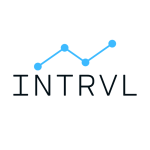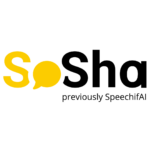In politics, we often “fight” the current battle with the last cycle’s lessons, tools, and mindsets. Higher Ground Labs is running a series entitled “Winning the Next Campaign”, where we spotlight challenges that campaigns and organizations face and point them to new and innovative solutions.
Reaching voters via traditional media has become more challenging with some communities, and nearly impossible with others. At the same time, digital consumption such as connected TV has skyrocketed, and new forms of advertising like influencer marketing are playing an outsized role. We interviewed two political media experts on how we can meet this moment: Mike Schneider, Partner & Head of BPI Labs, and Carahna Batiste, Creative Director at BPI.
The Q&A Interview:
BPI provides a cross-screen approach for its clients to reach voters. How should campaigns and organizations be thinking about the right media mix across platforms, channels, devices, etc?
Mike:
The goal should always be to meet voters where they are. Key changes to the media landscape are shaping how, where, and when voters engage with media. Streaming usage is at an all-time high. This is the first presidential election in which time spent with digital video surpasses traditional TV. For example, gaming — if we consider the spectrum from casual to console — is a nearly universal activity. As for social media, usage continues to increase, though with very different app adoption by age group.
Setting a media mix is just one part of the equation. How that media is purchased, and especially optimized, is even more critical. With traditional pay TV subscription rates at ~40%, a single point no longer holds its traditional significance — and it reflects, driving up frequency against a smaller number of voters. On the CTV side, where non-skippable ads are the norm, typical digital metrics like ‘completion rate’ are far less useful — which means buyers need to find new ways to optimize for attention and impact.
Carahna:
Personalization and relevance are paramount in capturing audience attention and driving engagement. From the creative perspective and getting voters’ attention, we know that voters respond to content and ads differently across channels and at different moments in time. A campaign’s approach should prioritize more than just audience and channel, focusing on constructing a cohesive ecosystem of content and message. The emphasis should be on understanding the nuanced pressures of different moments and effectively communicating messages tailored to each channel’s audience, especially during political disengagement.
Personalization is not just about social ads but also promoting the right kinds of stories, like news and organic content that bubbles up without us touching anything. The focus must be on understanding how the conversation is unfolding on different channels and leveraging it at the right times for the right reasons.
From a media or content creation standpoint, what’s new and potentially different from 2022 to 2024? And how should our campaigns be prepared?
Mike:
On the media side, campaigns have long been the pioneers in microtargeting across all types of media. But the foundation of digital targeting is being upended this cycle. Google is finally “killing” the cookie, platforms are restricting access to subscriber data, and states are enacting privacy legislation that impacts how data can be used.
These changes have been in the works for some time, so hopefully campaigns are already prepared! But if not — the time is now to firm up cookieless targeting solutions, build deep publisher and platform partnerships, and understand the best way to apply the same principles of measurement, even if the rules for how to do so are changing.
Carahna:
In 2022, when we were again trying to dig deep into what good digital strategy meant, many organizations leaned heavily into fun and social. But in 2024, the traditional stuff has to be the foundation. That means creating ecosystem content that mixes your traditional hero ads with influencer ads and promoted blogs and adding in publication, CTV, and organic promoted ads, among others. We need that steady-state persuasive content. For many candidates, despite their good work, knowledge of what they’ve done is largely overshadowed and stymied. They still need pre-roll and traditional steady-state ads as a foundation for the other surge, social, and ecosystem moments.
It’s not a conversation about what’s new without acknowledging the role AI will play this year. I believe responsible AI use will be significant in quickly communicating engaging and relevant messages for specific audiences and channels. When used with integrity, even dramatically, AI will allow us to keep up with the rapidly changing pace of social news consumption while taking advantage of big moments happening for various groups of voters.

How should campaigns be thinking about reaching and communicating with first-time voters in 2024?
Mike:
Campaigns need to build credibility with voters, not just frequency. That means finding different ways to tell their story. Of course, the 30 second “her”’ ad spot remains critical. Equally important is elevating content from sources and voices people will trust and buying media in a way that feels like discovery more than delivery.
That can be news — some of our most effective ads in previous elections have simply been putting the right story in peoples’ feeds. Creators will continue to play an outsized role, especially if they come from outside the typical political echo chamber. Producing ads that feel apolitical, so voters won’t just skip through them, is also critical.
Carahna:
Engaging first-time voters is a pivotal opportunity and a unique challenge in 2024. We must understand the nuances of the communication styles that resonate with this group. It’s not merely about capturing attention but creating meaningful connections that echo their lived experiences and aspirations. That means diving into their psyche, navigating their core cultural memories and aspirations, and crafting messages that evoke emotion around their shared values.
Whether it’s leveraging cultural references, nostalgic imagery, or even the cadence of language, campaigns must speak the language of the first-time voter by anchoring their message in the memorable moments that shaped first-time voters’ identities. It’s about understanding not just what viewers respond to but what resonates most deeply to capture their hearts and minds and, ultimately, their vote.
In terms of trust, voters in the past watched important media figures such as Walter Cronkite to tell them the truth. Today, voters have less trust in the media and institutions. How can digital and traditional media outlets tackle the lack of trust in the mis/disinformation era?
Mike:
It’s early in the election season and misinformation is already rampant, from fake robocalls to images. As generative AI tools get easier to use and more powerful, the risk grows. Campaigns will never win by chasing every piece of damaging content — they need to address the underlying beliefs, doubts, and concerns that give disinformation power. The best thing to do is proactively tell their story, and inoculate or “prebut” attacks as much as they focus on rebutting them.
Carahna:
I agree with Mike that campaigns must proactively tell their story as much as possible and build those relationships with voters early and often. I also believe there is room to tap into the power of transparency in a more genuine way. A genuine relationship of trust is built on reminding voters what a candidate has done well, as well as recognizing their missteps. Having those honest and hard conversations, communicating a plan to do better, and then following through on promises made is a recipe for stronger commitment and deeper loyalty.
HGL Portfolio Companies Innovating in the Media Space:
Influencer campaigns:
Greenfly is content collection & distribution for individuals or groups (ex. influencers) to increase social media reach & engagement.
people first is a source and distribute authentic influencer posts, videos, and comments from any voter segment: by state or district, party affiliation, age, race, gender, sexuality, profession, affinity or ideology.
Social Currant matches organizations with mission aligned influencers/creators.
Message/media testing & optimization:
Grow Progress identifies which messages or content work best by running Rapid Message Tests.

INTRVL uses effective media measurement and optimization via machine learning models for audience targeting and response analysis.
SpeakEasy Political provides political ad tools for campaign branding, digital ads, and political mail.
Swayable measures the impact of political messages and helps campaigns optimize messaging strategies.
News & press:
Clipbook highlights coverage critical to your organization across 100,000+ media sources based on your specific needs, issue areas and requirements. Your team automatically receives customized & curated daily media reports.
Chorus AI helps campaigns increase their content production by keeping campaigns connected to the attention cycle and social graph, and optimizing creativity for each member of a campaign audience.
Video:
Hovercast Provides production Tools for Events and Live Streams. Hovercast boosts engagement and donations by turning the audience’s actions into dynamic graphic overlays.
Rep’d a video messaging and engagement platform, Rep’d scales your field efforts by providing a designated space for personalized voter engagement through video.
Social Media:
Measure Studio is a social media content intelligence and analytics platform that uses AI to understand and optimize content performance.
SoSha’s Generative AI technology generates a variety of different posts catered to different audiences and platforms to maximize audience engagement.
About the Experts:
Mike Schneider built the BPI Labs team to lead ideation and development of new marketing tech products as well as BPI’s offerings across paid media, analytics, targeting, and measurement.
Carahna Batiste is an award-winning, interdisciplinary creative director who develops impactful brand projects with strong visuals, story-telling, and unparalleled production.
Check out the first piece in HGL’s Spotlighting Challenging Series: The Role of Generative AI in the 24 Election & Beyond.














